Trees have been woven into the fabric of myths and stories since the dawn of time, holding profound meaning across cultures. The biblical Tree of Knowledge embodies the allure and danger of forbidden knowledge, while the Tree of Life whispers of divine favour and everlasting existence. Even in the real world, trees hold a touch of the legendary. The fig tree (Ficus religiosa), known as the Bodhi tree, became a symbol of enlightenment (Bodhi) after the Buddha found wisdom under its branches during a 49-day meditation.
A legendary tree that captured my imagination during my childhood is Yggdrasil, the world tree of Norse mythology. It was believed to be an immense ash tree, so vast that it held the universe together with its immense roots and branches. The most fascinating aspect of the myth is the many fabulous creatures associated with Yggdrasil. Norse myths often depict the tree as a vibrant ecosystem teeming with life, where each creature plays a specific role in maintaining the world's balance. For example, the squirrel Ratatoskr scurries up and down the tree, carrying messages between the wise eagle perched at the top and the destructive dragon gnawing at the roots.
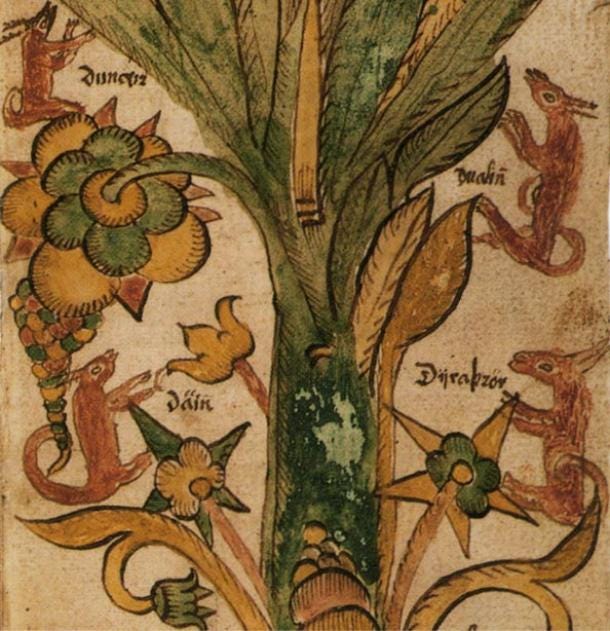

Some of my favourite Creatures related to Yggdrasil:
Ratatoskr: A mischievous squirrel who scurries up and down Yggdrasil, carrying messages and insults between the eagle perched at the top (representing wisdom) and the dragon Níðhöggr gnawing at the roots (representing chaos and destruction).
Níðhöggr: A monstrous dragon that dwells at the base of Yggdrasil, relentlessly gnawing at its roots. It represents decay, destruction, and the constant threat to the world's order.
Dáinn, Dvalinn, Duneyrr, and Duraþrór: Four stags that reside in the branches of Yggdrasil and nibble on the leaves. They represent the flow of time and the changing seasons.
Veðrfölnir (Veðrfǫlnir): A hawk that sits atop Yggdrasil, keeping watch over the entire world. It represents observation, vigilance, and the ability to see the bigger picture.
When I began drawing "The Tree”, all these myths and legendary trees flooded my mind, making it difficult to choose just one. I sketched various versions, but none captured the mood I envisioned for the deck. Frustrated, I put the card aside and focused on another illustration, knowing that inspiration would strike eventually.
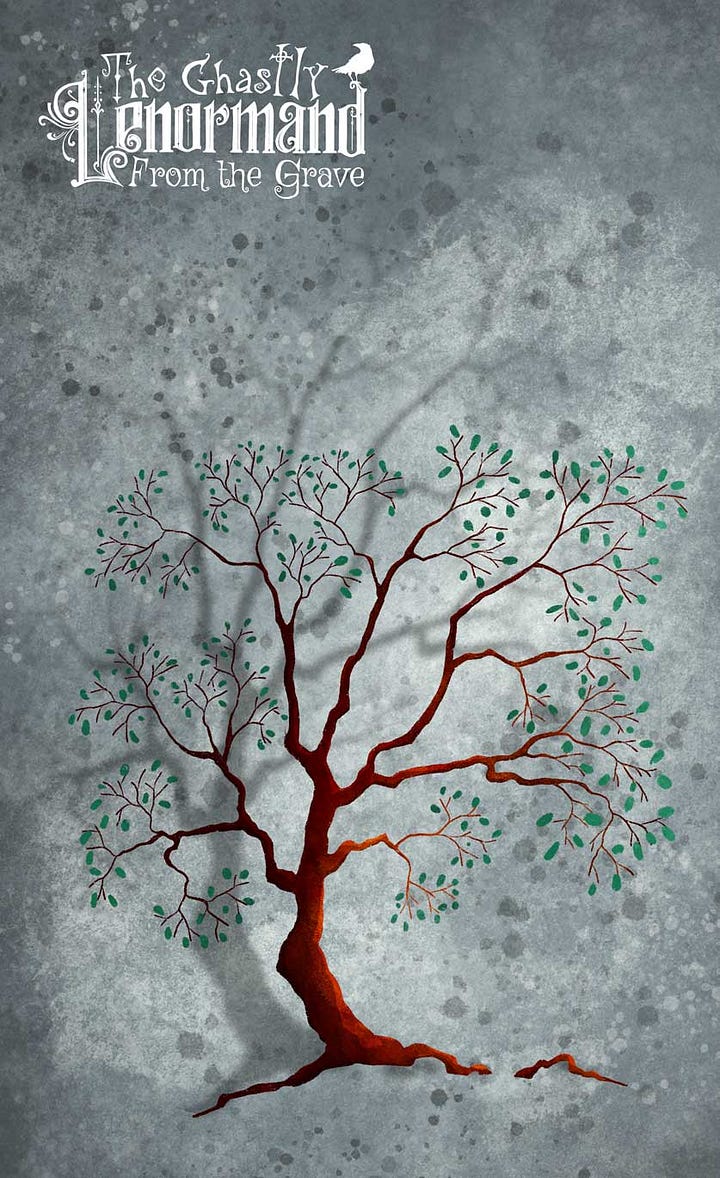
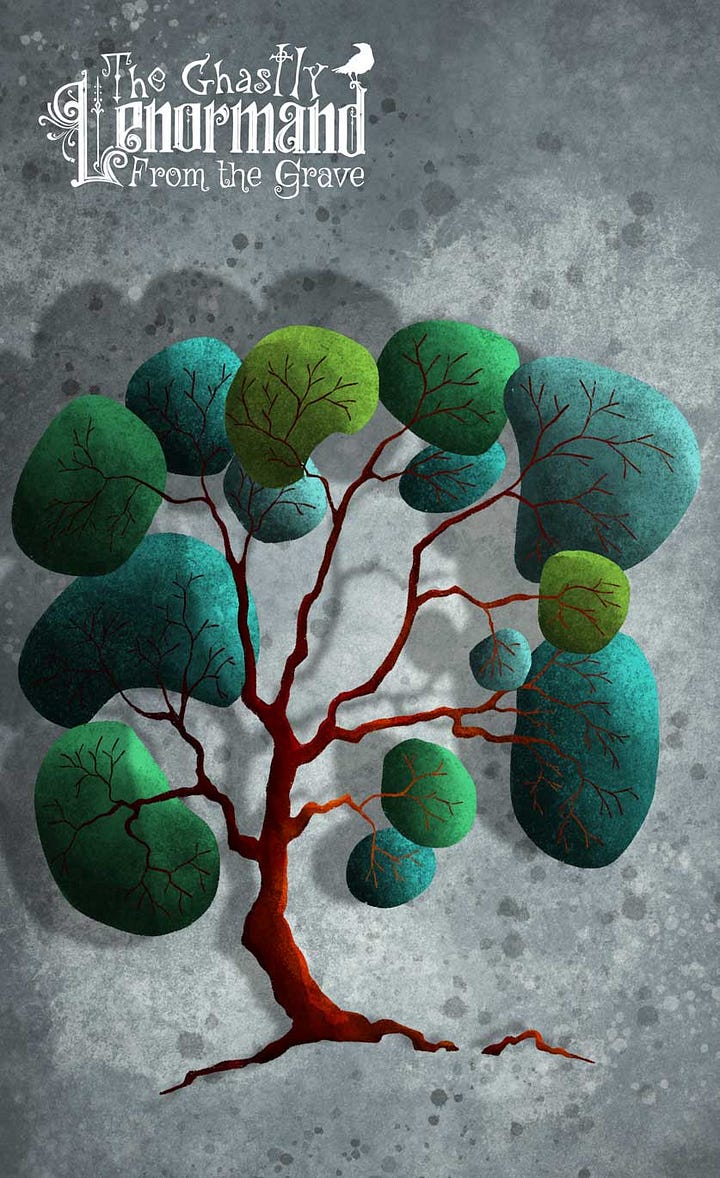
One evening, while sorting through photos I took in London, I rediscovered a place I had forgotten: St. Pancras Old Church graveyard! Whispered to be one of England's oldest Christian sanctuaries, the graveyard held a multitude of stories within its weathered walls. The tale of Mary Shelley and Percy Bysshe Shelley's secret meeting at Mary's mother's grave added a touch of romantic intrigue. However, the most captivating curiosity was the sight known as the "Hardy Tree" – an ash tree encircled by a chilling crown of hundreds of weathered headstones, their inscriptions swallowed by the encroaching shadows.
The Hardy Tree
The tale unfolds in the mid-1860s, a time when Britain's rail network was experiencing a period of explosive growth. London, overflowing with a burgeoning population, strained against the limitations of its existing lines. To accommodate the ever-increasing tide of commuters, a grand expansion was planned, its path cutting straight through the heart of St. Pancras' hallowed graveyard.
The task of exhuming the remains and granting them a respectful new resting place fell upon an architecture firm. This sensitive duty, often delegated to the least experienced, found itself entrusted to a young employee named Thomas Hardy, whose name would one day grace the spines of classic novels like "Far from the Madding Crowd" and "Tess of the d'Urbervilles."
With the somber work of exhumation complete, a sea of headstones remained, posing a new question. What fate awaited these silent memorials? Hardy, in a decision whose inspiration remains shrouded in mystery, devised a unique solution. He arranged the headstones in a circular pattern around an ash tree, carefully choosing a spot that would remain untouched by the encroaching railway.
Over the years, the tree and the stones have formed a macabre union. The ash, its roots twisting around the headstones, appears to consume them. Life and death have become intertwined, a testament to the enduring power of both in this grotesque yet strangely beautiful tableau.
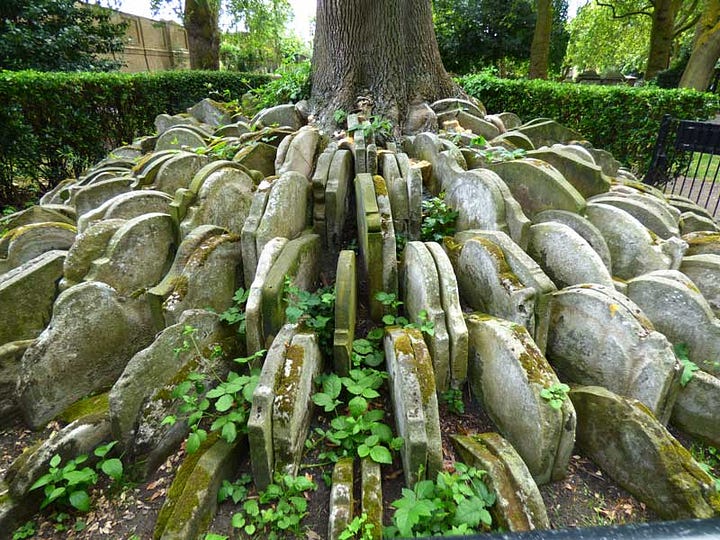
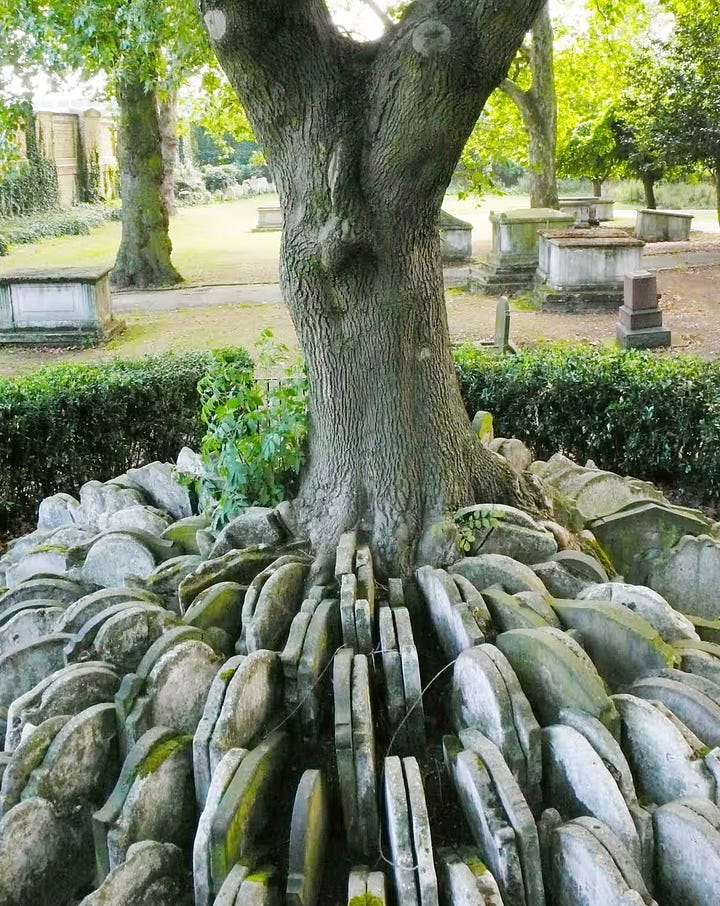
Intriguingly, photographs of St. Pancras churchyard from 1926 depict the piled tombstones, absent the ash tree. This revelation suggests that the tree itself sprouted from a seed deposited among the stones – a verdant life emerging half a century after Thomas Hardy's work. The story of the "Hardy Tree" as a direct result of his actions may be a romantic myth, but the undeniable connection between the stones, the tree, and the relentless passage of time remains a captivating mystery.
Sadly, the year 2022 witnessed the fall of the mighty ash... a stark reminder of the ephemeral nature of all existence. The headstones remain, whispering their silent stories to the wind...
I have found my tree! In the final illustration, I decided not to crowd the graphic with too many tombstones. The card, after all, is called The Tree, and it has to be the main character!
A curiosity about St. Pancras Old Church graveyard
In St. Pancras Old Church Cemetery lies the rather ornate tomb of Sir John Soane (1753-1837), an incredibly intriguing and bizarre architect. Purportedly, the design of Soane's grave was the inspiration for Sir Giles Gilbert Scot's model for the iconic red phone box.
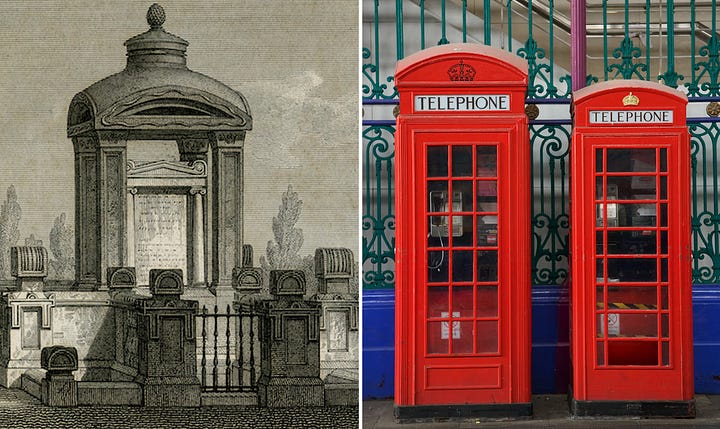
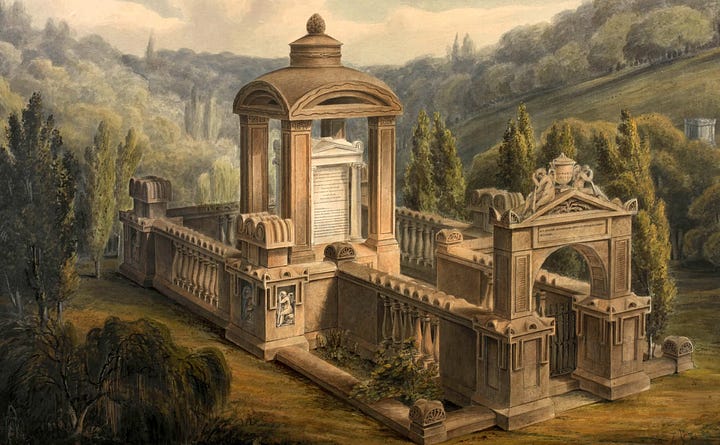
And just because I love Norse Mythology: The Nine Worlds Yggdrasil Connects
Asgard: The realm of the Aesir gods, including Odin, Thor, and Frigg. Imagine a majestic city with golden halls, where the gods hold court and prepare for Ragnarok, the end of days.
Vanaheim: Home to the Vanir gods, such as Freya and Freyr, associated with fertility, love, and beauty. Lush landscapes and bountiful harvests define this realm.
Jotunheim: The land of the giants, a harsh and chaotic realm populated by powerful and often monstrous beings. Think towering mountains, icy wastelands, and fire giants.
Midgard: The world of humans, where mortals live and experience life's joys and struggles. Imagine rolling plains, dense forests, and bustling settlements.
Nidavellir: The realm of the dwarves, skilled craftsmen who live underground and forge powerful weapons and armor for the gods. Picture vast underground caverns lit by forges and echoing with the clang of hammers.
Muspelheim: A fiery realm of intense heat, home to the Muspelsheimr, fire giants who will play a destructive role in Ragnarok. Imagine a land of erupting volcanoes and rivers of molten lava.
Niflheim: A realm of mist, ice, and darkness, where the primordial serpent Níðhöggr resides. This frigid world is shrouded in perpetual twilight. Later, it became the abode of Hel, a goddess daughter of Loki, and the afterlife for her subjects, those who did not die a heroic or notable death.
Till the next time, have a magnificent macabre week
Andrea






Awesome!
Probably a new tree will sprout from the tree that split.